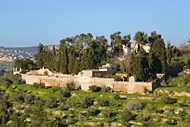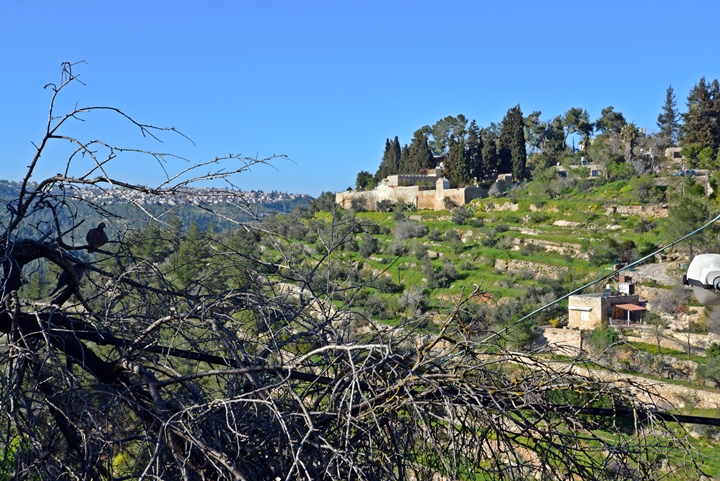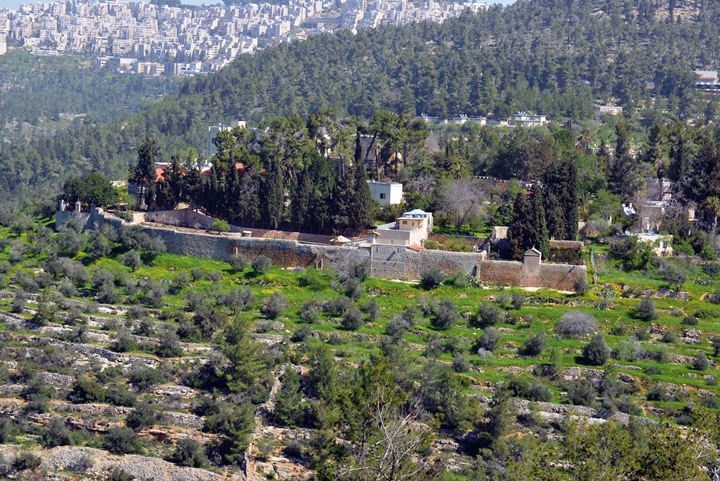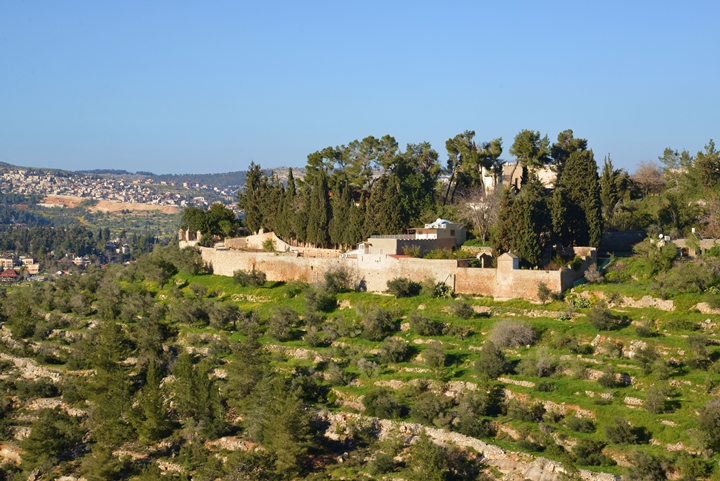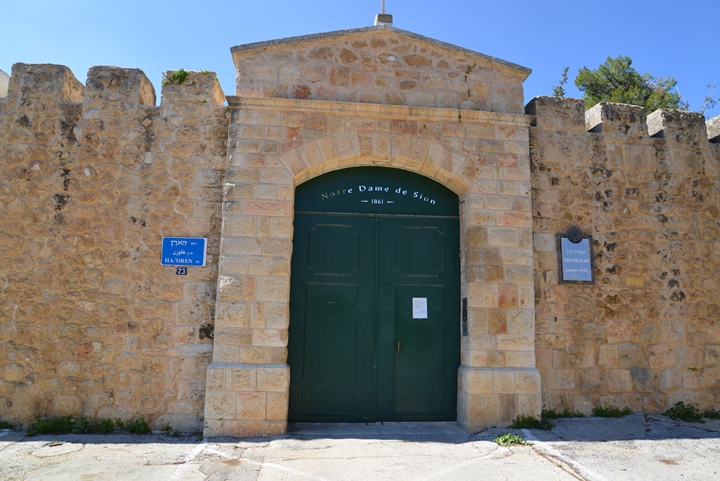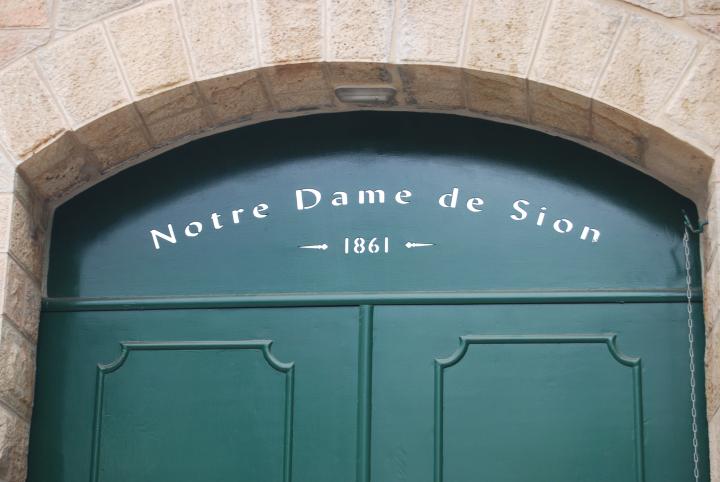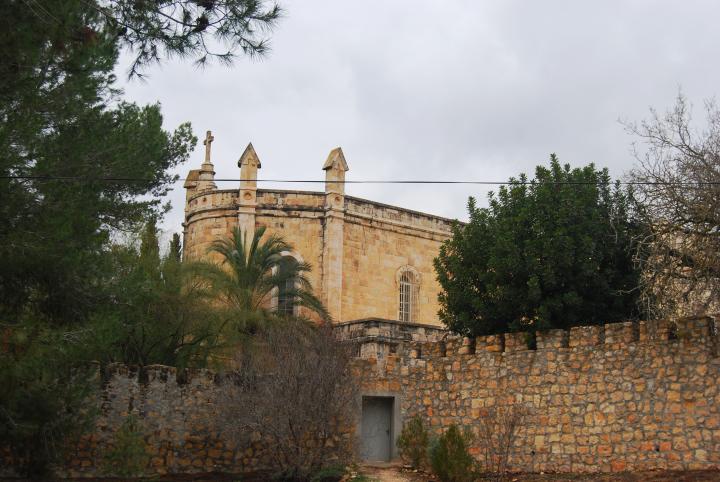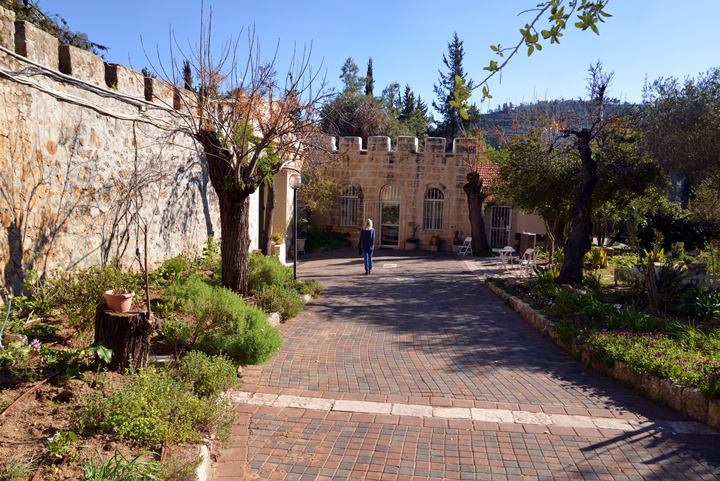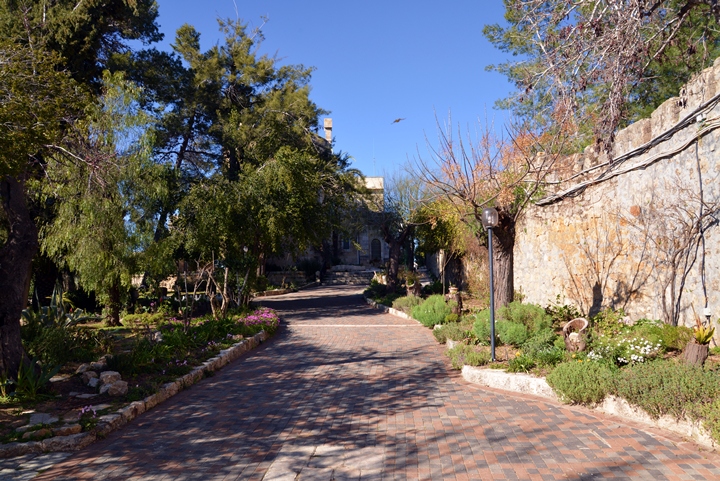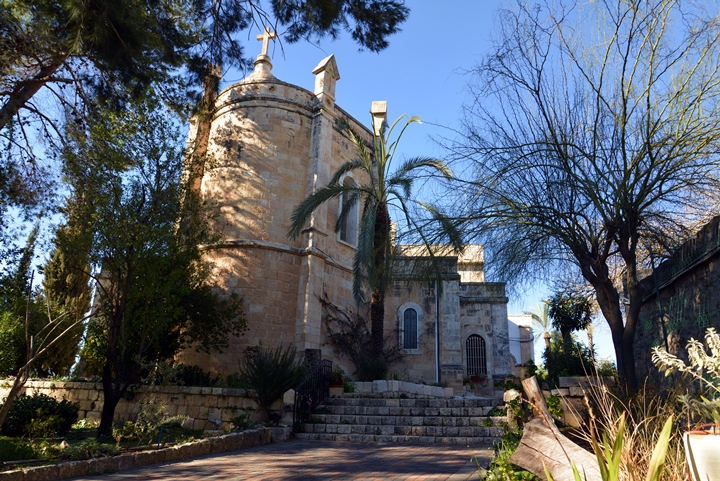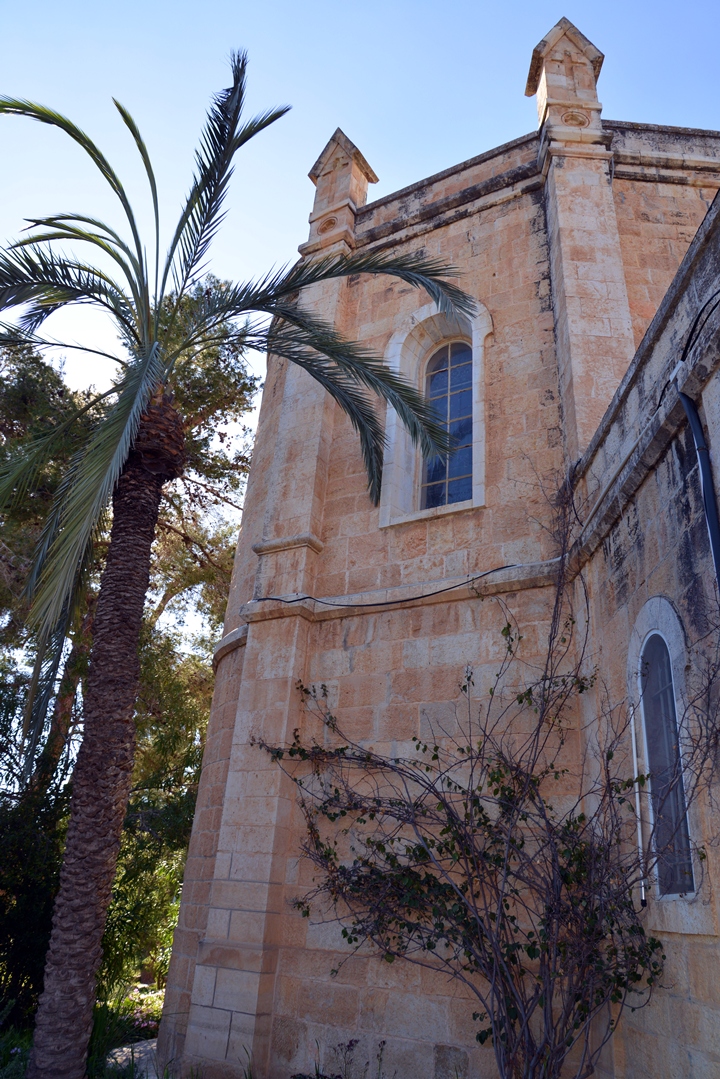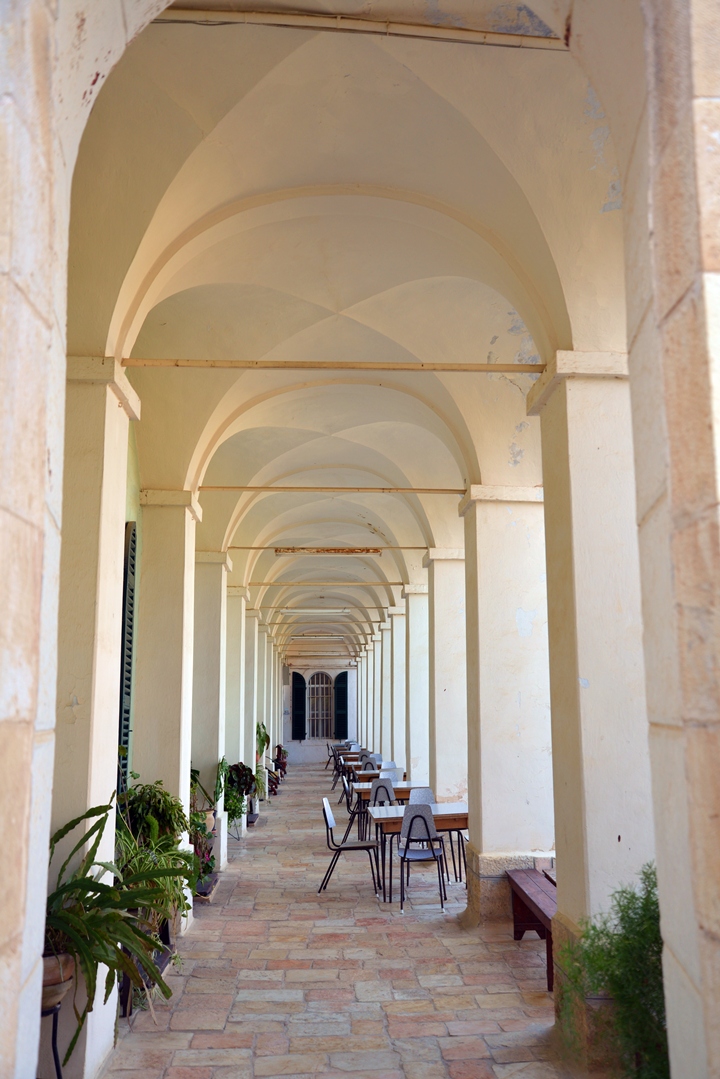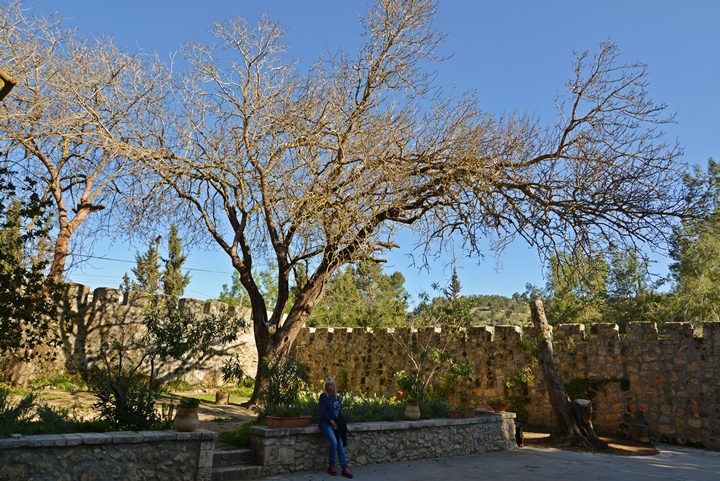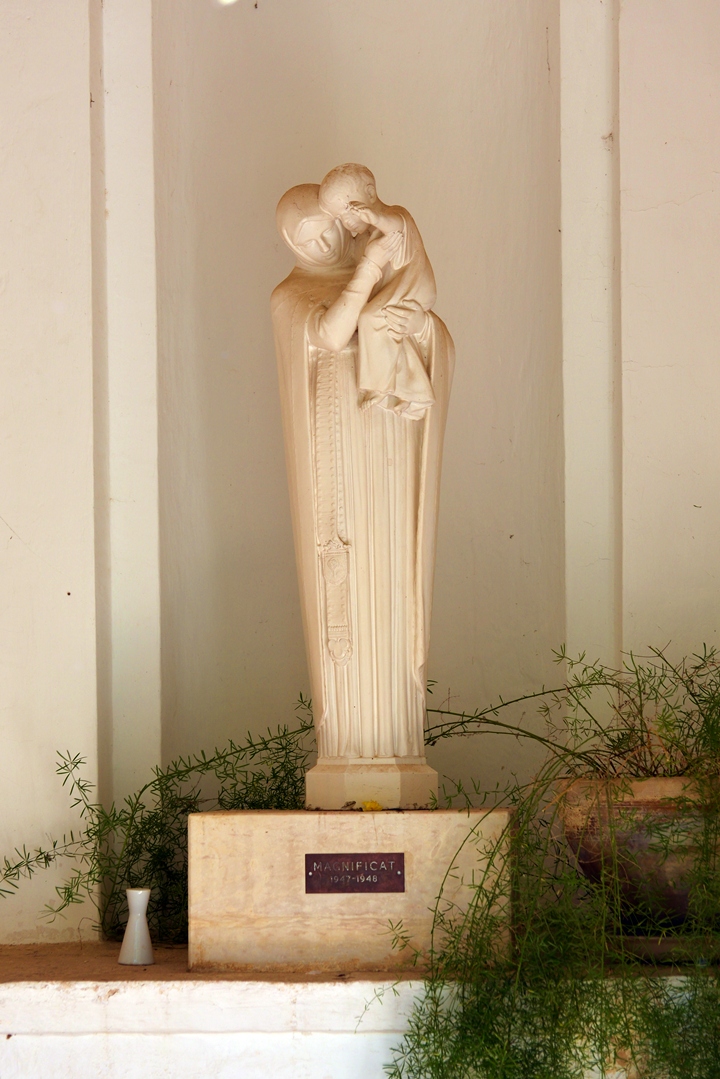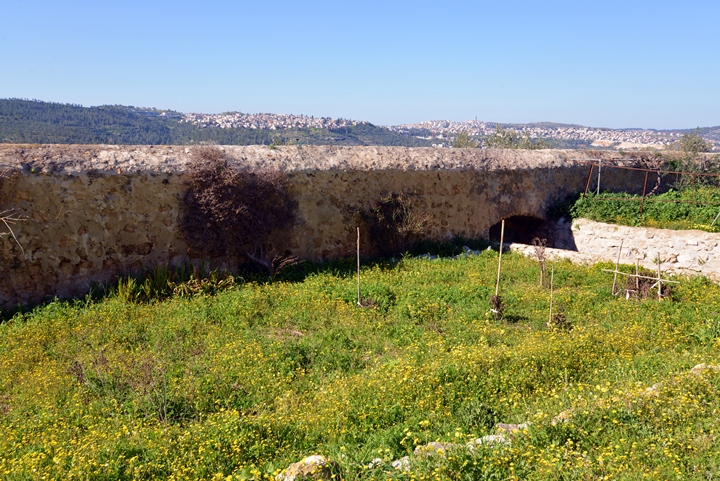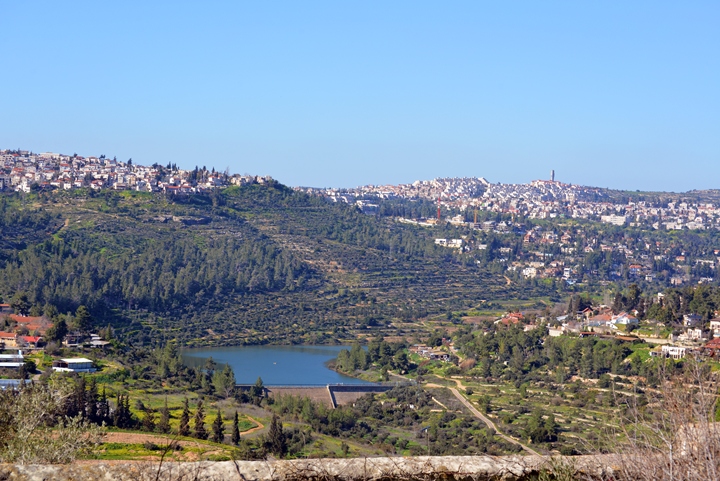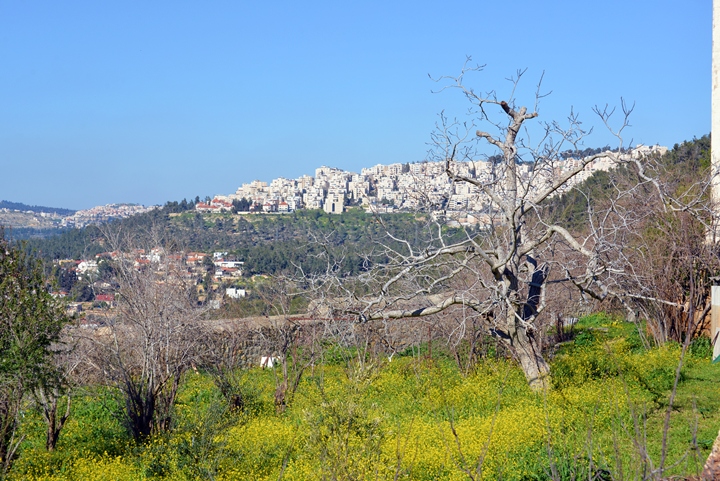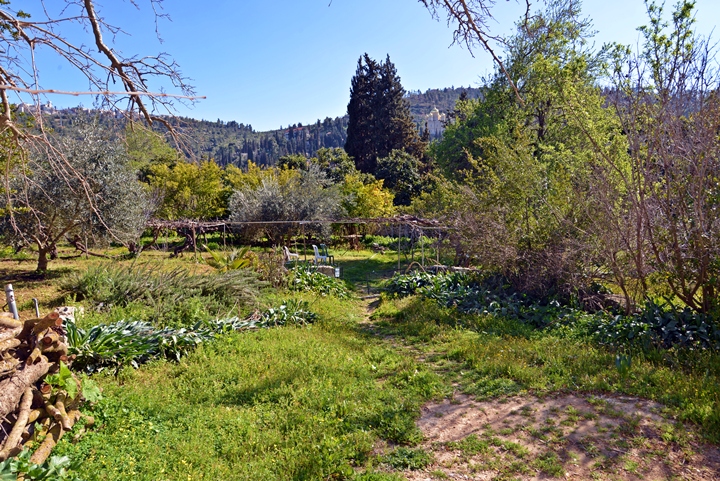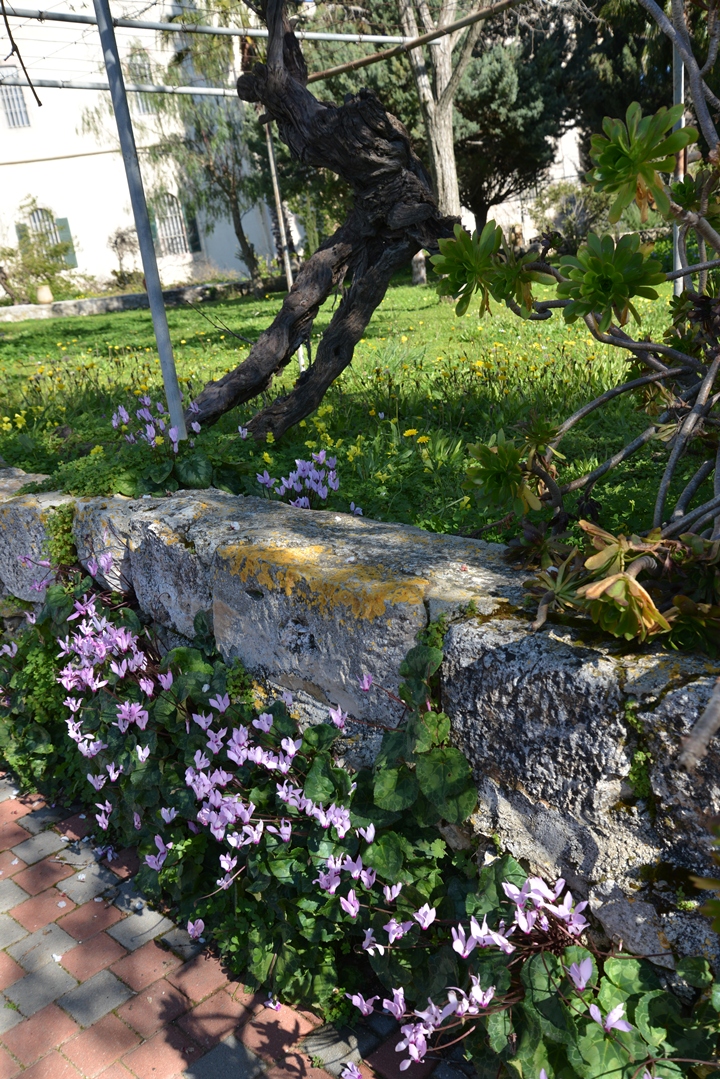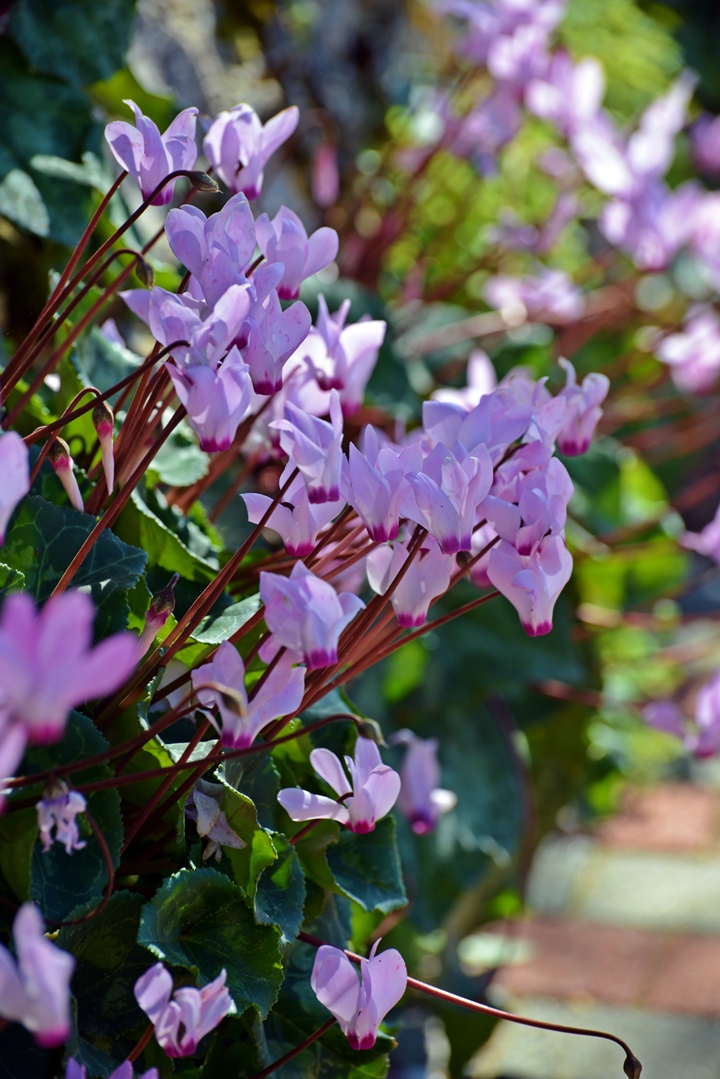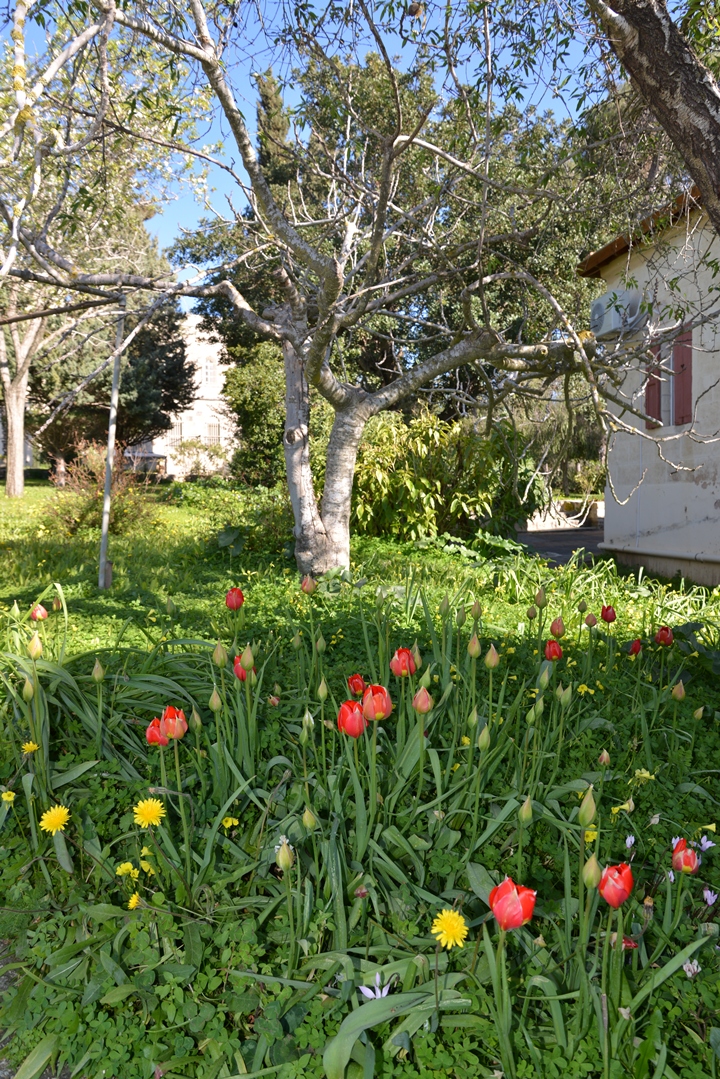A walled 19th Century monastery built on the west hill of Ein Karem.
* Site of the Month June 2015 *
Home > Sites > Jerusalem > Ein Kerem > Convent of Sisters of Our Lady of Zion (Notre Dam De Sion)
Contents:
Overview
Location
History
Photos
* General views
* Inside
* Church
* West side
* Gardens
Etymology
Links
Overview:
The Convent of the Sisters of Our Lady of Zion is a Catholic religious community located in the Ein Kerem neighborhood of Jerusalem, Israel. The community was founded in France in 1860 by Father Theodore Ratisbonne and his brother, Alphonse Ratisbonne, and is dedicated to promoting dialogue and understanding between Jews and Christians.
The convent in Ein Kerem was established in the early 20th century and has since become an important center for interfaith dialogue and education. The sisters engage in a variety of activities, including teaching, pastoral work, and organizing interfaith events and seminars.
The convent building itself is a beautiful example of traditional Jerusalem architecture, with stone walls and a red-tiled roof. Visitors can attend Mass or participate in other spiritual activities at the convent, and the sisters also offer guided tours of the surrounding area, including the nearby Visitation Church.
The Sisters of Our Lady of Zion are committed to promoting peace and understanding between people of different faiths, and their work has earned them recognition and support from both Jewish and Christian communities.
Location:
This aerial map shows the location of the convent, on the western side of Ein Kerem.
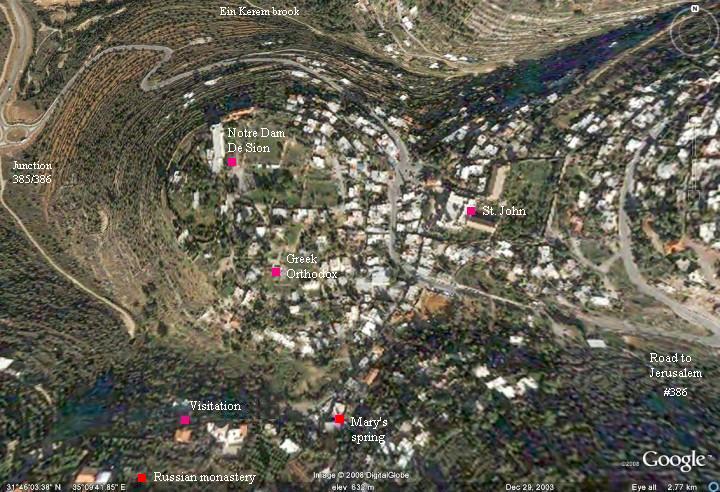
History:
The convent was constructed in 1860/1. The place started as an orphanage and as the private house of its owner, the Alphonse Ratisbonne. He was born to a Jewish family, then converted to Christianity. His tomb is located in the garden.
The convent is operated by the order of nuns of the Zion sisters, and was converted to function as a guest house.
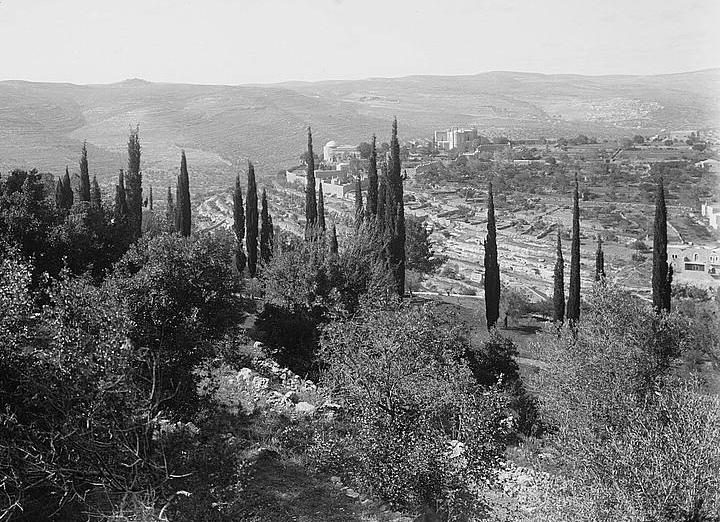
The convent in the early 20th Century, as seen from the Russian convent
– Matson Collection – Library of Congress
Photos:
(a) General view:
On top of the western hill in Ein Kerem is the 19th Century monastery of Sisters of Our Lady of Zion (Notre Dame De Sion).
Click on the photos to view in higher resolution…
In the center is the walled compound of the monastery of Sisters of Our Lady of Zion, seen here from the Russian monastery of the south side .
These ancient terraces on the foothills around the monastery were once used for agriculture. Among the terraces are cisterns, installations and burial caves. According to a survey, the use of terraces started in the Israelite period (Iron age). Most of the terraces are dated to the Hellenistic period when Ein Karem witnessed a growth in population and agriculture activity. Mary’s spring and cisterns supplied water to the crops.
The main gate to the Monastery is located on the east side, on the junction of Ha’Oren (The Pine) street and Derech Ha’Ahayot (The Sisters Way). The place is open to the public on certain visiting hours, and the entrance is through this gate.
The signage above the gate reads “Notre Dame de Sion – 1861”.
The next photo shows a view from the eastern side of the monastery, with the church towering over the walls of the monastery.
(b) Inside the Monastery:
Past the gate are offices of the monastery. Two main paved paths lead to the church and to the vast gardens and other structures around the monastery.
This path leads along the eastern walls to the church and the main building of the monastery.
(c) Church and Monastery building:
The Church and other sections of the monastery are closed to the public.
A closer view of the southern side of the monastery is seen below.
On the eastern side is a long portico – an arched hallway, open on its east side to the gardens.
The following photo shows the section of the garden adjacent to the main building of the monastery.
Statues are located in various sections of the monastery and the garden. This beautiful statue – Mary holding infant Jesus – is titled “Magnificat”, which means the Song of Mary – an ancient hymn of Mary.
The Magnificant hymn recalls the song of Mary while visiting her cousin in Ein Karem, as per Luke 1:46-55. After Elizabeth praises Mary for her faith, Mary sings the Magnificat in response.
(d) West side:
Along all sides of the monastery are high walls, with several small gates that provided access to the fields around the complex. In this photo is the western wall.
In the far background are residential neighborhoods of Jerusalem.
In the valley of Nahal Sorek stream is the reservoir of Beit Zayit.
There are several neighborhoods seen here:
-
to the right of the reservoir is Beit Zayit (“House of Olives”, established 1949).
-
On the left hill are the houses of Ma’oz Tsion (“Stronghold of Zion”, established 1951).
-
In the closer right hill is Motza Illit (“Upper” Motza, established 1933),
-
In the far right background are the houses of Mevaseret Zion (Messanger of Zion, from Isaiah 40:9, established 1956).
Another north view is seen in the following photo. In the right background are the modern houses of Givat Sha’ul (“Hill of Saul”), established 1906).
(d) Gardens:
Around the monastery complex as vast gardens, which create a relaxing atmosphere in the convent. In the center of this south view you can see the golden domes of the Russian convent.
In the early spring time, between the trees and clinging to the walls, are wild flowers – such as these cyclamen flowers (Rakefet), which are seen in the photo below.
A closer view of the gracious cyclamen (Rakefet) flower. This flower is also known for its healing attributes, used in homeopathic medicine, so this may have been another reason why the nuns planted this flower in the garden.
In the garden are other wild flowers such as daisies and red tulips.
Etymology (behind the name):
Links:
* BibleWalks sites in Ein Kerem:
- Overview of Ein Kerem
- Visitation church
- Mary’s spring
- St. John Ba Harim
- Greek Orthodox
- Russian Convent
* Links:
- Library of Congress – Ein Karem
* Other internal links:
BibleWalks wild flowers, herbs and plants
BibleWalks.com – traversing the Holy Land
Greek Ein Kerem<<<—previous –<<< All Sites >>>—Next Jerusalem site—>>> Russian Convent
This page was last updated on Mar 12, 2023 (new overview)
Sponsored links:
